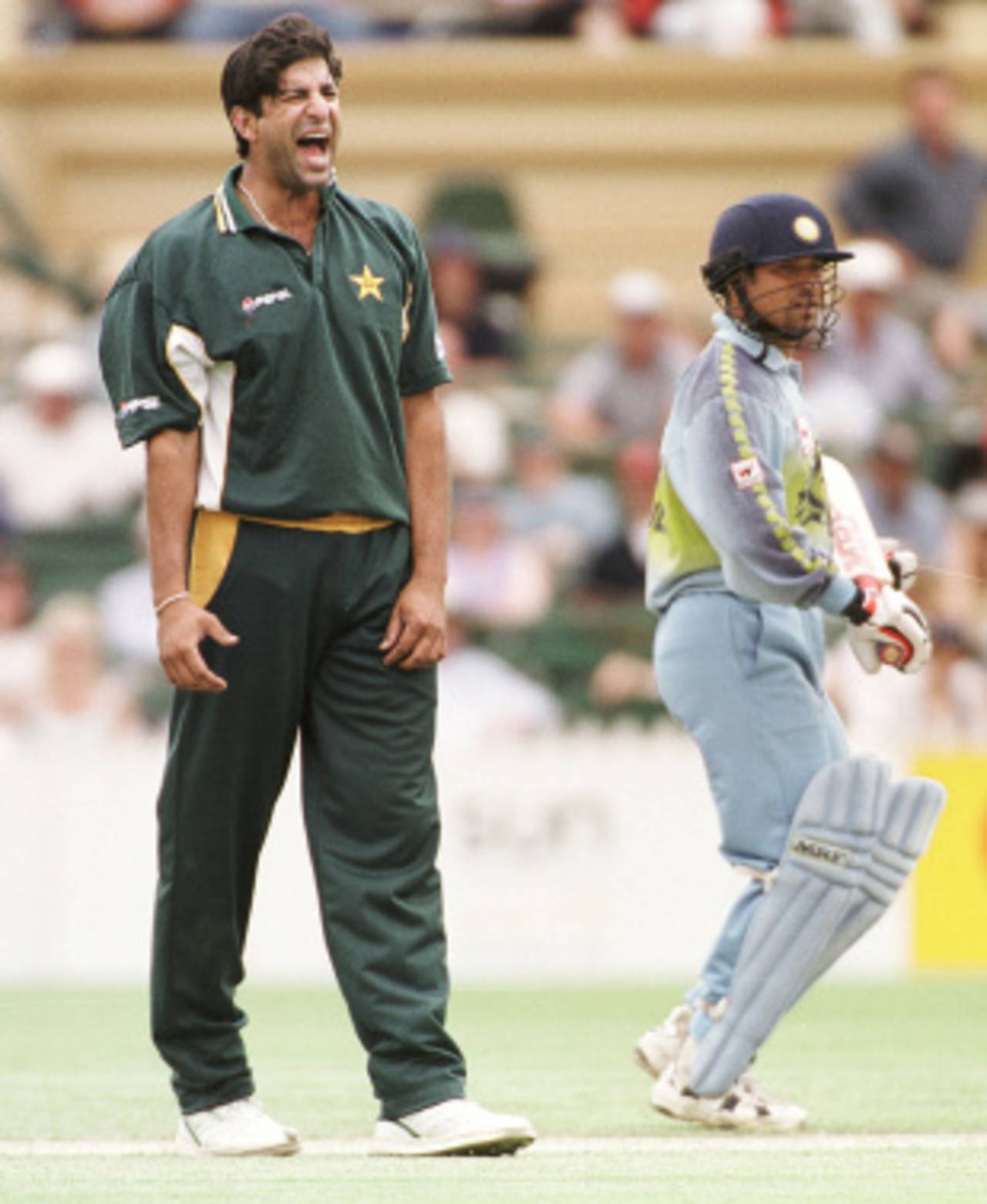Survival of the fittest
In a week famous for sixty-fourth anniversaries, India and Pakistan might wish to reflect on the fruits of those intervening years of toil on the cricket field
Kamran Abbasi
25-Feb-2013

Pakistan enjoyed an endless supply of quality bowlers. For India, it was batsmen • Sandra Teddy/Getty Images
In a week famous for sixty-fourth anniversaries, India and Pakistan might wish to reflect on the fruits of those intervening years of toil on the cricket field. When midnight's chimes created two nations in 1947 greater concerns about the division of land, people, infrastructure, and wealth preoccupied people's minds than partition of cricketing abilities.
Today, India stride the upper echelons of cricket both in running the game and performing on the field, despite this summer's disappointing effort. Pakistan, meanwhile, are struggling to avoid outcast status and soon will do battle with Zimbabwe at the foot of the international table. These might turn out to be transitory positions but at the moment there is a hint of permanency about them.
The 1947 distribution of cricketing talents has given rise to broad generalisations, which have to some degree held true. Pakistan has been blessed with fast bowlers of world class, from Fazal Mahmood, through Imran Khan, Wasim Akram, and Waqar Younis, to the cursed pair of Shoaib Akhtar and Mohammad Amir. Even now, Pakistan's young breed of Wahab Riaz and Junaid Khan are offering hope that the line will continue.
India's pacemen have been more sporadic and less dominant. Kapil Dev, Javagal Srinath, and Zaheer Khan have fought lone battles. Hypotheses for this disparity have been many: genetic differences, climate, even diet. None are satisfactory or barely plausible. Is there much difference between Delhi and Lahore? The migrations at partition will have made the region more homogenous not less.
Indeed, Pakistan's fast bowlers weren't especially formidable before Imran Khan, who was greatly influenced and motivated by the speed sensations he encountered during World Series Cricket, the formidable Australian and West Indian pacemen of his era. They were Imran's role models, driving him to higher speeds and achievement. In turn, Imran was the inspiration of the many Pakistani fast bowlers who followed, and soon he was joined by Wasim and Waqar who created their own legacies and legends.
This role-model theory helps explain the different routes taken by cricketers of both nations. India has a regal history in batsmanship, from the masters of bygone days through Sunil Gavaskar, Dilip Vengsarkar, and Mohammad Azharuddin to today's holy trinity of Rahul Dravid, VVS Laxman, and Sachin Tendulkar. These batting riches are beyond the dreams of Pakistanis who have had to be satisfied with a disintegrating line of Hanif Mohommad, Zaheer Abbas, Javed Miandad, Inzamam-ul Haq, and Mohammad Yousuf, a heritage which ends in nothingness.
While bowling is a natural skill that tolerates imitation, batting is more technical and it is not possible to simply rely on following your hero's example. Success in batting requires advanced technique and a cricketing infrastructure to support the maturation of batsmen. A supportive infrastructure is dependent on the cricket board creating a stable environment for its players. It is here that the failings of Pakistan's successive cricket boards have had the most damaging effect, and the explanation why batting has become a lost art in Pakistan cricket while fast bowlers emerge unhindered.
The success of Indian cricket as an enterprise offers it an opportunity to overcome weaknesses in fast bowling if it chooses to invest in the development of wicket-taking Test fast bowlers rather than breeding run-stoppers for the Indian Premier League. As unlikely as that prospect might be, notwithstanding the way India's bowling has been exposed on this tour of England, the plight of Pakistan's batsmen appears far bleaker.
Yet the joyous celebrations that marked Pakistan's Independence Day were a reminder that hope can remain strong even in the face of near calamity. Indeed, the best international performance by a South Asian this summer has come from Pakistan's Asad Rauf. Both Rauf and Aleem Dar have shown that excellence is achievable whatever the circumstances. Admittedly, ICC's governance of the elite panel has helped nurture them away from the clutches of the Pakistan Cricket Board. Rauf and Dar have helped banish the ill-repute of Pakistani umpires, a reputation that was well earned, as it was too by umpires of the cricketing powers of Australia, England, and India.
So, 64 years has brought us fearsome fast bowlers from Pakistan and wizardly batsmen from India. It has brought us innovative spin bowlers and disastrous fielders from both nations. But it has left us with serious challenges. What can Pakistan cricket, and its batsmen specifically, do to flourish again? Is survival even possible? What can India do to remedy its weakness in fast bowling, and what on earth has happened to Indian umpires? Do they still exist?
Perhaps we are witnessing another fine example of Darwinian thinking? Indian batsmen and Pakistani fast bowlers, Indian administrators and Pakistani umpires, this is survival of the fittest.
Kamran Abbasi is an editor, writer and broadcaster. He tweets here